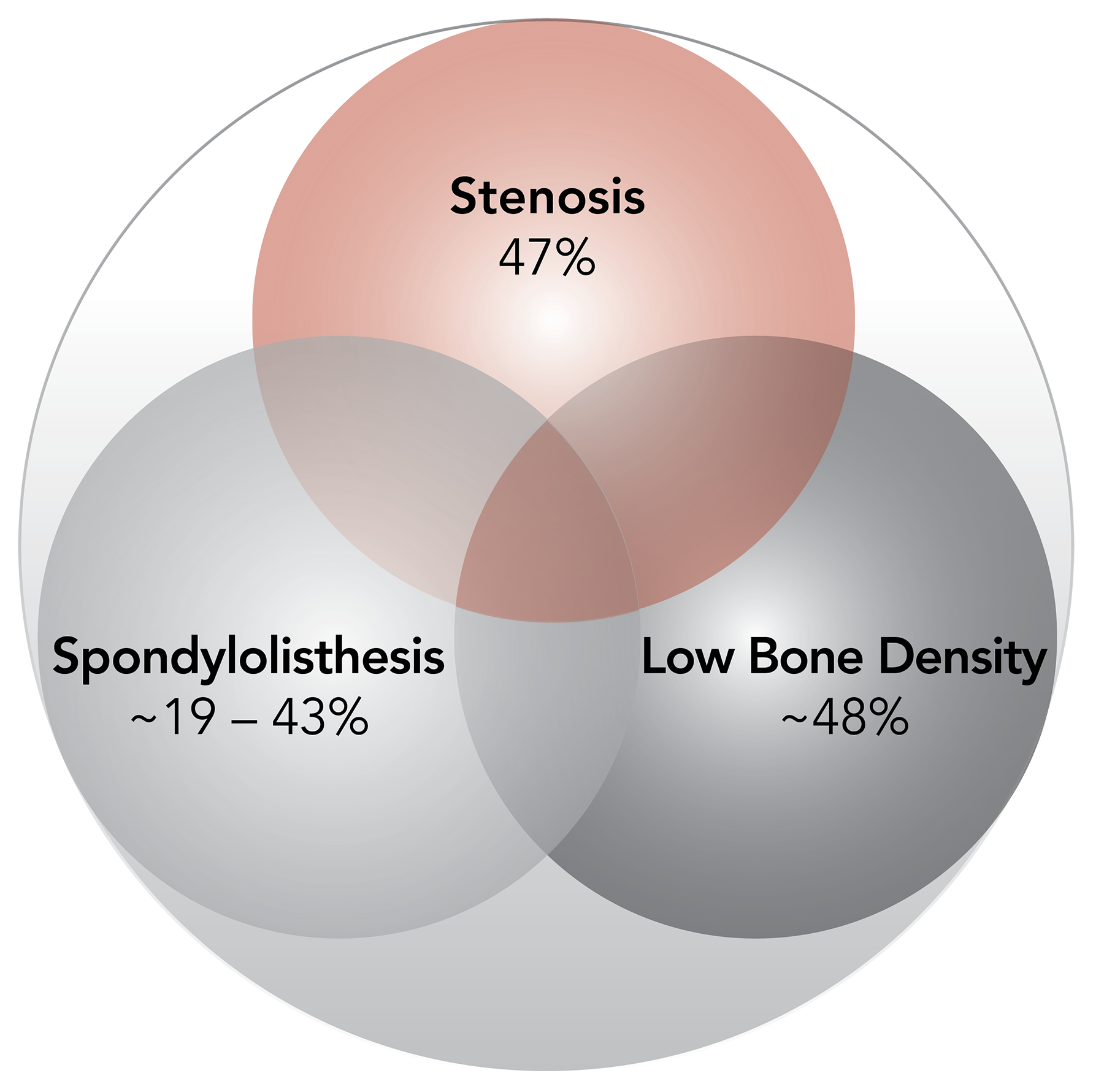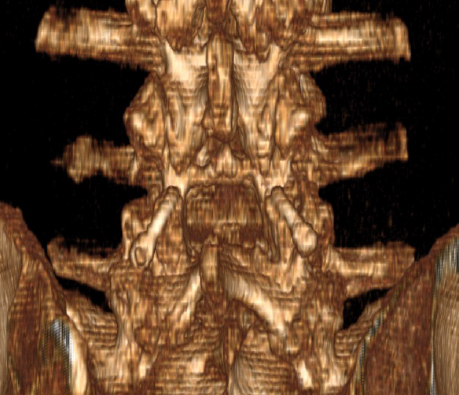The Aging Spine Dilemma
Degenerative Spondylolisthesis with Stenosis in the Aging Spine
- Fastest growing surgical population 65+ will increase ~30% in next 10 years¹
- 47% of people 60 – 69 have spinal stenosis¹
- The prevalence of degenerative spondylolisthesis ranges from 19% to 43%²
- 48% of people 65+ suffer from low bone density³

Treatment Goals
Aging Spine Solution
Karma provides a solution for aging patients with low-grade spondylolisthesis and spinal stenosis.

Karma cortico-pedicular posterior spine fixation system provides a treatment option for aging spine patients with low-grade spondylolisthesis and spinal stenosis that lies between a laminectomy for decompression, and a spinal interbody fusion. As an adjunct to fusion with a laminectomy for decompression, it provides surgeons with a metal-free, tissue-sparing cortico-pedicular spinal fixation that leverages the densest bone of the posterior elements to stabilize the spine for facet fusion.
Surgeon
Testimonials
“Karma technology is truly a disruptive procedure in supplemental fixation. The FEA (Finite Element Analysis) data demonstrated similar stability while reducing stress shielding through the anterior column of the spine. My patients who have been treated using Karma have had very positive results. It has been an exciting journey to work with a great company and engineers to simplify the technique and allow for the device to be safely and reproducibly deployed using minimally invasive surgery techniques. Congratulations to the team for all of their hard work to reach this milestone.”
“The Karma fixation system represents a significant advancement in the treatment of degenerative spondylolisthesis and stenosis, offering a less invasive, yet highly effective alternative to traditional fixation methods.
Its innovative approach not only reduces surgical time but also minimizes the risk associated with extensive tissue disruption, making it a preferable option for patients, particularly those with low bone quality.”
“When a patient presents with a chief complaint of neurogenic claudication, a stable spondylolisthesis and a secondary complaint of mild to moderate low back pain, Karma provides an ideal, less invasive solution and in many cases can be performed outpatient.”
- Source: Kalichman L, Cole R, Kim DH, et al. Spinal stenosis prevalence and association with symptoms: the Framingham Study. Spine J. 2009;9(7):545–550. doi:10.1016/j.spinee.2009.03.005
- Source: H. Inose, et al. Comparison of decompression, decompression plus fusion, and decompression plus stabilization: a long-term follow-up of a prospective, randomized study. The Spine Journal 22 (2022) 747-755
- Source: Sarafrazi, et al. NCHS Data Brief, No. 405, March 2021

